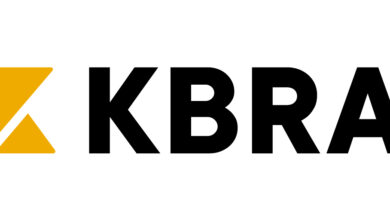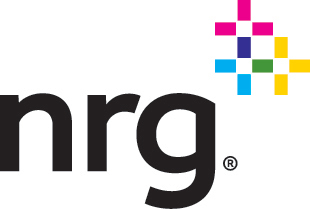3D Printing in Aerospace and Defense Market – Global Size & Share Analysis, Growth Trends & Forecasts to 2028 – ResearchAndMarkets.com

DUBLIN–(BUSINESS WIRE)–The “3D Printing in Aerospace and Defense Market Size & Share Analysis – Growth Trends & Forecasts (2023-2028)” report has been added to ResearchAndMarkets.com’s offering.
The 3D printing market within the aerospace and defense sector is on a meteoric rise, estimated at a substantial USD 3.52 billion in 2023, with projections soaring to an impressive USD 7.12 billion by 2028. This phenomenal growth is underpinned by a robust Compound Annual Growth Rate (CAGR) of 15.13% during the forecast period from 2023 to 2028.
So, what is fueling this rapid ascent? The answer lies in the compelling benefits that 3D printing brings to the aerospace industry. This transformative technology is rewriting the rules by producing parts with unmatched efficiency. It slashes costs, accelerates lead times, and empowers designers with unparalleled digital flexibility. In an era where every second counts and budgets are scrutinized, 3D printing emerges as the solution of choice, delivering substantial cost savings to both users and manufacturers.
However, this transformative journey is not without its challenges. Despite a growing adoption trend within the aerospace and defense sector, significant hurdles are temporarily hindering widespread acceptance. Yet, there’s no need for alarm. Advancements in 3D printing technology and material sciences are poised to overcome these limitations. As a result, we can anticipate a future where 3D printing dominates the aviation landscape, redefining the very essence of aircraft manufacturing.
Diving into the dynamic landscape of 3D Printing in the Aerospace and Defense Industry, we find a diverse and fragmented market. Here, aircraft Original Equipment Manufacturers (OEMs) and spacecraft manufacturers share the stage with Tier-1 and Tier-2 manufacturers, all collectively supporting the aerospace and defense industry.
Among the prominent players who lead this charge are General Electric Company, Airbus SE, Safran SA, Aerojet Rocketdyne Holdings Inc., and The Boeing Company. These industry giants recognize the rising demand for lightweight components and more fuel-efficient airborne platforms, prompting substantial investments to bolster their existing additive manufacturing capabilities.
Highlighting the growth potential and commitment to this transformative technology, Burloak Technologies made waves in July 2021 by unveiling its second additive manufacturing center in Camarillo, California. This strategic move aimed to strengthen its Additive Manufacturing Center of Excellence in Ontario. Concurrently, aircraft OEMs are increasing their foothold in the additive manufacturing market.
They recognize the economic advantage of 3D printing components, compared to the traditional subtractive manufacturing methods, particularly in the space sector. As a testament to this shift, esteemed space agencies like NASA and ESA are actively exploring the use of 3D printed components in spacecraft production. This pivotal development paves the way for new entrants, injecting fresh competition into the market.
Among the various segments, the aircraft sector stands out as the beacon of growth during the forecast period. This remarkable surge can be attributed to the mounting number of commercial aircraft orders and deliveries, coupled with the escalating adoption of advanced technologies in aircraft manufacturing. 3D printing, the linchpin of this transformation, has ushered in a new era of efficiency. It presents an array of use cases where additive manufacturing takes center stage, replacing conventional methods with unprecedented advantages. Reduced costs, faster lead times, and a digitally malleable approach to design and development are the cornerstones of this evolution.
A shining example of this paradigm shift is evident in the B777X aircraft, where the GE9X engines are a testament to the potential of additive manufacturing. These engines incorporate a staggering 300 3D printed parts, encompassing critical components like fuel nozzles, temperature sensors, heat exchanges, and low-pressure turbine blades. Collaborative efforts between aircraft OEMs and 3D printing firms are now geared toward a significant reduction in inventory costs and storage space.
This shift from maintaining large stocks of spare parts to on-demand production is streamlining operations, cutting lead times, and simplifying supply chain complexities. A notable instance of this transformative partnership is the five-year deal signed in January 2023 between Leonardo and BEAMIT Group, an Italian premier service bureau specializing in high-end 3D printing applications. Together, they are on a mission to develop and qualify parts for installation on Leonardo aircraft models.
The growth trajectory extends beyond the borders, with the Asia-Pacific region poised for remarkable expansion in 3D printing for aerospace and defense. This remarkable growth story is intricately woven into the fabric of the rapidly expanding aviation sector. Countries like China, India, and South Korea are stepping up their defense expenditure, fueling the region’s aerospace ambitions. A pivotal milestone was achieved when, according to the International Air Transport Association (IATA), China emerged as the largest aviation market in terms of seating capacity in mid-2020. Emboldened by this growth, China is on a mission to establish 400 civilian transport airports by the end of 2035, as outlined in its “Made in China 2025” master plan.
China’s vision extends beyond just aviation; it earmarks aerospace equipment and 3D printing as key growth drivers for Chinese manufacturing industries. A prime example of this vision coming to life is the C919 narrow-body aircraft. Chinese manufacturers leveraged 3D printing to craft titanium parts, including 28 cabin door components and two fan inlet structural parts.
India, too, is making strides in harnessing 3D printing technology for aerospace and defense applications. Startups are sprouting across cities like Bangalore, Chennai, Mumbai, and Visakhapatnam, specializing in the production of essential parts. Their clientele includes the Indian Navy, Air Force, Indian Space Research Organization (ISRO), and Hindustan Aeronautics Limited (HAL). A notable achievement in this regard is the construction of 3D printed bunkers and permanent defenses by the Indian Army along the Line of Actual Control in eastern Ladakh, a significant testament to the technology’s military applications.
Key Topics Covered:
1 INTRODUCTION
1.1 Study Assumptions
1.2 Scope of the Study
2 RESEARCH METHODOLOGY
3 EXECUTIVE SUMMARY
4 MARKET DYNAMICS
4.1 Market Overview
4.2 Market Drivers
4.3 Market Restraints
4.4 Industry Attractiveness – Porter’s Five Forces Analysis
5 MARKET SEGMENTATION
5.1 Application
5.1.1 Aircraft
5.1.2 Unmanned Aerial Vehicles
5.1.3 Spacecraft
5.2 Material
5.2.1 Alloys
5.2.2 Special Metals
5.2.3 Other Materials
5.3 Geography
6 COMPETITIVE LANDSCAPE
6.1 Vendor Market Share
6.2 Company Profiles
6.2.1 Aerojet Rocketdyne Holdings Inc.
6.2.2 MTU Aero Engines AG
6.2.3 Moog Inc.
6.2.4 Safran SA
6.2.5 General Electric Company
6.2.6 The Boeing Company
6.2.7 Airbus SE
6.2.8 Samuel, Son & Co.
6.2.9 Raytheon Technologies Corporation
6.2.10 Honeywell International Inc.
6.2.11 American Additive Manufacturing LLC
6.2.12 Lockheed Martin Corporation
7 MARKET OPPORTUNITIES AND FUTURE TRENDS
For more information about this report visit https://www.researchandmarkets.com/r/nmxols
About ResearchAndMarkets.com
ResearchAndMarkets.com is the world’s leading source for international market research reports and market data. We provide you with the latest data on international and regional markets, key industries, the top companies, new products and the latest trends.
Contacts
ResearchAndMarkets.com
Laura Wood, Senior Press Manager
[email protected]
For E.S.T Office Hours Call 1-917-300-0470
For U.S./ CAN Toll Free Call 1-800-526-8630
For GMT Office Hours Call +353-1-416-8900






